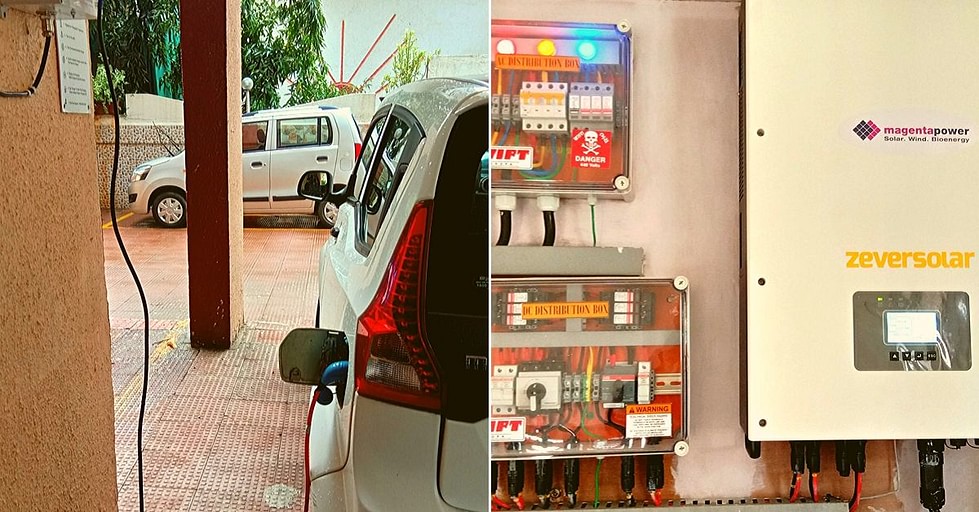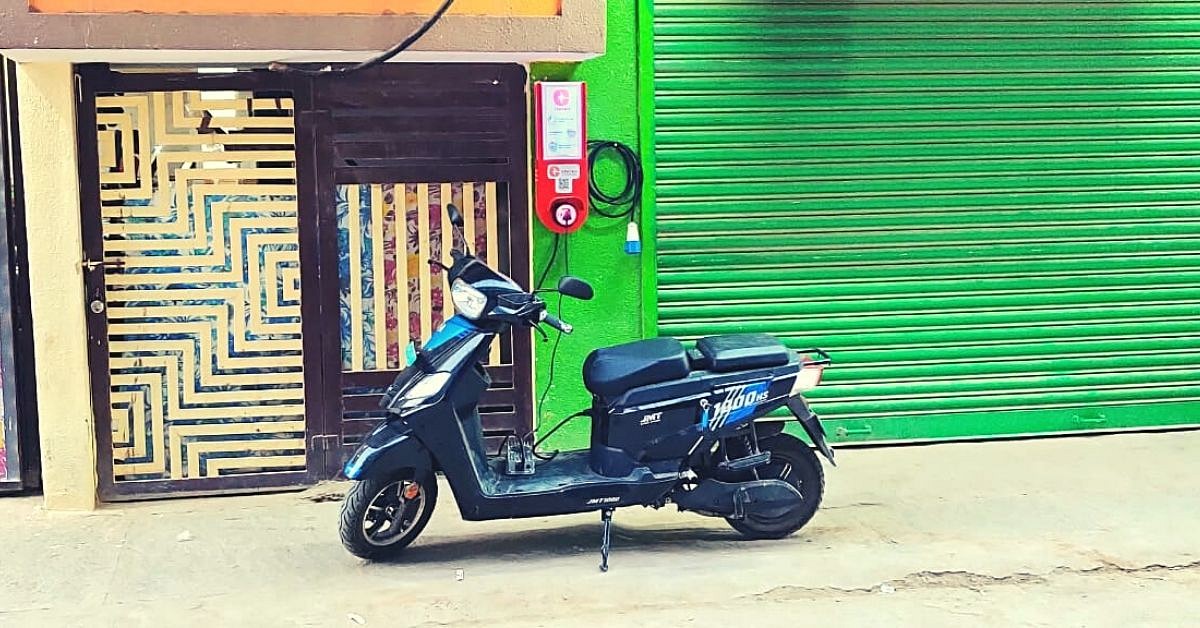Everything You Need to Know About Charging EVs at Home Before Buying One
Want to buy an electric vehicle, but know nothing about what you need to charge it? Here is a brief explainer that can point you towards the right direction.

Before buying an electric vehicle (EV), one of the fundamental concerns many Indians may have is the ability to charge their vehicles. The lack of an extensive charging infrastructure in our major cities, concerns surrounding the battery range of a particular EV and the cost of batteries have proven to be major bottlenecks for consumers here.
The key question here is do you need to first set up the charging infrastructure and then purchase an EV, or is it the other way around? Here is a short explainer of what consumers must concern themselves with when thinking about buying an EV.
Do You Need Some Parking Space?
It’s ideal if you have a dedicated parking space at home or place of work for your EV. Other arrangements concerning electrical connections, sockets and charging stations can be addressed at a later stage. If you don’t have dedicated parking spaces at home or the office, investing in an EV could prove to be cumbersome.
This is because according to an assessment by Statiq, a Gurugram-based startup which has launched over 150 EV charging stations in Delhi, Bengaluru and Mumbai, “over 80% of the electric car users charge their EVs overnight at home or at work.”
If you don’t have a dedicated parking space, it’s best if you purchase an EV with portable or swappable batteries. Take the example of PureEV, a Hyderabad-based OEM startup, which manufactures two-wheelers and lithium batteries.
“Our batteries are portable, swappable and easy to charge. The batteries are designed to endure the harsh environmental conditions in India. They don’t require a 25 AMP charging socket or some additional arrangements for charging. You can charge it in any 10 Amp or 15 Amp household socket,” said Gaargi Pachal, Executive Assistant to MD and CEO at PURE EV, in an interview with The Better India. They also offer consumers adapter-based lithium battery chargers. In any 16 ampere socket at home or office — all you need to do is pull out the battery from your scooter and put it for charging.
Brands That Are Charging Your EVs
There are startups like Magenta Power, which are setting up charging stations in housing societies across cities like Mumbai. Each charging station has a capacity of 3.3 kW. These are AC chargers meant for community use. Residents can plug their vehicle for overnight charging, as it does not possess the fill-as-you-go quick one-hour charging facility.

But what if you want to charge your EV outside your home or place of work? If your vehicle runs out of charge and there is not a charging station in sight, it could prove worrisome. This is why many top tier OEMs (original equipment manufacturers) and startups have invested in setting up charging infrastructure in cities where they operate.
Tata Motors, for example, has set up charging stations across the National Capital Region (NCR) in places like Dwarka, Noida Sector 5, Pari Chowk in Greater Noida, Gurugram and Dilshad Garden in New Delhi, among other places. For consumers of their Nexon EV, they have developed an app that can assist users in finding the nearest charging station, besides offering updates on how much energy is left in the vehicle’s batteries.
In an interview with The Better India, Gaurav Gupta, Chief Commercial Officer at MG Motor India, spoke of what the company offers consumers with their MG ZS EV (SUV).
“We have equipped every ZS EV with a five-way charging infrastructure, an onboard cable to charge anywhere and an AC fast charger that can be installed for charging at homes and offices. We are also establishing a strong, pan-India DC super-fast charging network that will be initially available at select MG showrooms in Delhi, Mumbai, Bangalore, Hyderabad, and Ahmedabad. This network will be later expanded to cover MG dealerships in satellite cities along key routes and provide charge-on-the-go with roadside assistance,” Gupta said.
Of course, there are startups like Charzer, which has set up 100 IoT-powered Kirana Charzer charging stations in Bengaluru that are low cost, low maintenance and compact. These EV charging stations can be installed at small shops and by individuals, which will allow them to earn an additional source of income. The Kirana Charzer is a 3.3 kW charging station, which will be available to all small commercial establishment owners. Customers will, on average, charge their vehicles for 45 to 50 minutes – instead of 3 hours.

Of course, how much time it takes for the EV to charge, its battery range and performance varies from one vehicle to another depending on the size of the battery pack and technology. However, if waiting to charge your batteries is not an option, one can always opt for EVs that offer swappable batteries. These battery swaps barely take a minute or two.
Companies like Sun Mobility, RacEnergy, Amara Raja Power Systems and Lithion Power are some of the leading battery swapping solution providers in the country with battery swapping stations established in Delhi-NCR, Chandigarh, Hyderabad, Ahmedabad, Bengaluru, Chennai and Mumbai. But these companies offer swappable battery solutions for predominantly two and three-wheeler EVs, besides public buses.
Different Kind of Chargers
Depending on the vehicle, there are different kinds of chargers that consumers can look out for. There is the Type 1 AC Charger, which can slow-charge an EV from an AC socket at home.
“It provides AC charging power levels up to 220 volts and a maximum of 16 amps of current. It can manage single-phase input power levels of up to 3 kW,” an article by The Quint noted.
You can also check out the Type 2 Charger, which has fast-charging capabilities and works with three-phase input power systems. Compatible with AC and DC charging systems and vehicles with a Combined Charging System (CCS) plus, it can “handle input power between 7.4 kW to 43 kW with a 400 volt AC supply”, The Quint article cited. These are the chargers that are predominantly set up at the homes of EV consumers.
Following on from Type 2 Charger, you have CCS, which is more ubiquitous with newer EVs. This system is capable of regular charging at home and DC fast-charging cars from commercial stations. The common DC fast-chargers can handle charge power levels of up to 350 kW. Another fast charging system is CHAdeMo, which can handle DC fast-charging of up to 50 kW. This was one of the earliest fast-charging systems developed in the world.
Finally, you have the GB/T type chargers installed by the PSU, Energy Efficiency Services Limited (EESL), which is capable of DC fast-charging with an output of 15 kW for EVs with lower power. However, it can also handle up to 230 kW. This GB/T type charger comes under the Government of India’s mandated DC 001 standard for EV chargers.
Except for the Type 1 Charger, all the other charging systems can help determine the requisite amount of current needed to charge the vehicle. Some even come with electronic or manual lock systems that can prevent theft while charging.

What We Need is a Stronger Charging Infrastructure
Despite all the rapid developments in India’s EV charging segment over the past five years, we still have a long way to go. The lack of an extensive charging infrastructure is probably the biggest bottleneck to EV adoption in India. Unless the public and private sector begin investing more in the charging infrastructure, India’s chances of going electric look slim.
In the meantime, you can reach out to some of the top EV charging solution providers in India listed by EV Reporter and find out more about what you can do with your EV.
(Edited by Yoshita Rao)
Like this story? Or have something to share? Write to us: [email protected], or connect with us on Facebook and Twitter.
If you found our stories insightful, informative, or even just enjoyable, we invite you to consider making a voluntary payment to support the work we do at The Better India. Your contribution helps us continue producing quality content that educates, inspires, and drives positive change.
Choose one of the payment options below for your contribution-
By paying for the stories you value, you directly contribute to sustaining our efforts focused on making a difference in the world. Together, let’s ensure that impactful stories continue to be told and shared, enriching lives and communities alike.
Thank you for your support. Here are some frequently asked questions you might find helpful to know why you are contributing?


This story made me
-
97
-
121
-
89
-
167











